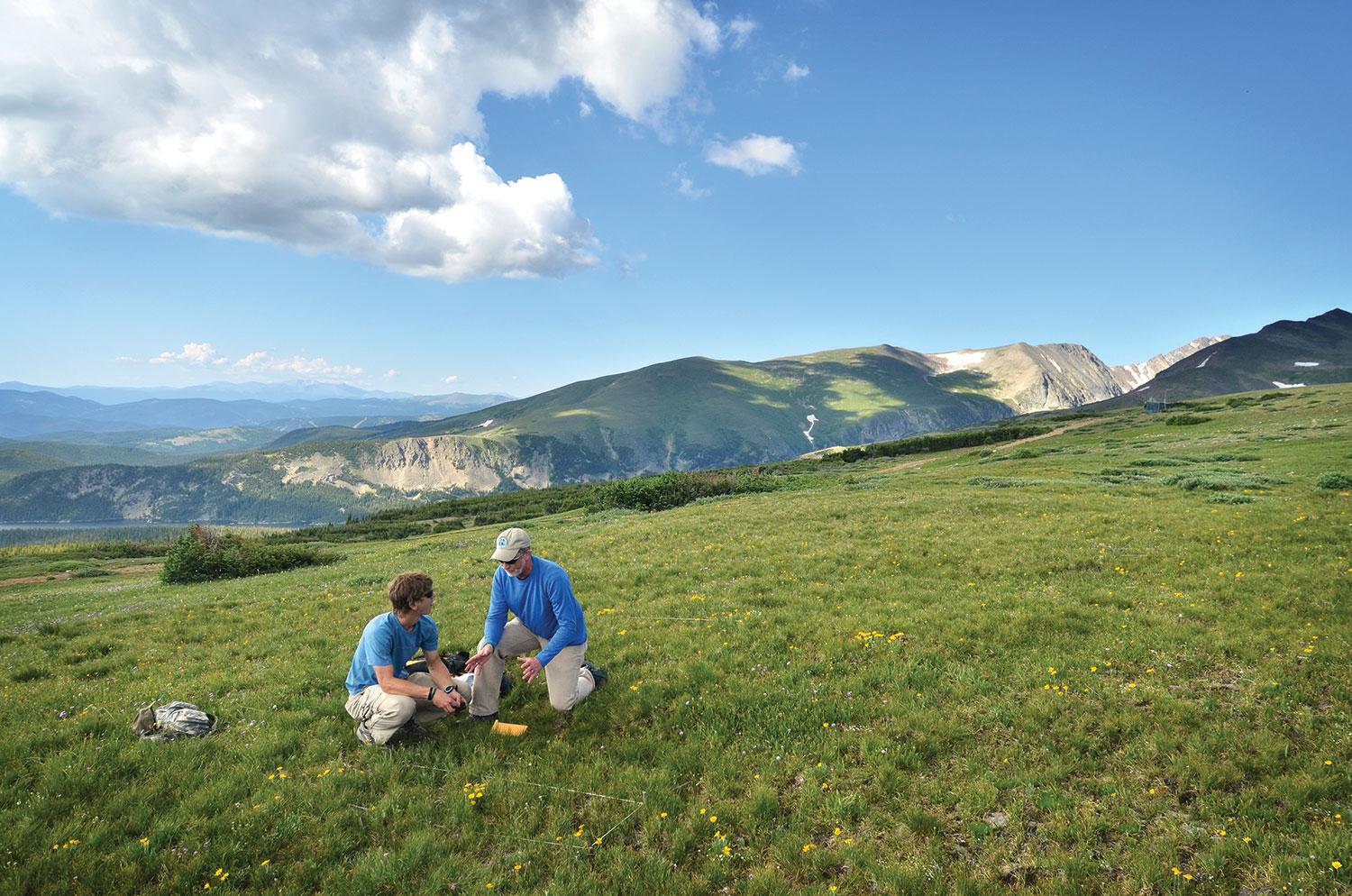
Origins: Alpine Science

Mountain Research Station
The Rocky Mountains gave CU-Boulder a head start in alpine science. Francis Ramaley widened the lead.
The Minnesota native came to Boulder in 1898 to teach biology, emerging early in the 20th century as a pioneering figure in mountain plant ecology through his research and books, including Colorado Plant Life and Plants Useful to Man.
In 1909 he established a field station in the hardscrabble mining town of Tolland, Colo., providing CU with a high-altitude base of operations for biological study. Originally called the Colorado Mountain Laboratory, it was one of the first inland biological research stations in the United States.
The station was later combined with a summer camp for CU-Boulder professors. To get to field research sites, scientists would hitch rides on boxcars headed up the Continental Divide.
Today the station Ramaley founded is known as the Mountain Research Station. Part of INSTAAR (CU’s Institute of Arctic and Alpine Research), it is among the world’s best-known research sites for mountain environmental science.
“We’ve been around a long time, which means we know the biology of the alpine system really, really well,” says Bill Bowman, professor of ecology and evolutionary biology and, since 1991, the station’s director.
The lab moved to its current site, on Niwot Ridge overlooking the Boulder Watershed, about 26 miles west of Boulder, in 1920. The government deeded the former U.S. Forest Service land to CU-Boulder in 1929.
Every summer, students and faculty conduct field studies at the station alongside visiting researchers from around the world.
Research topics range from plant and animal ecology to hydrology and atmospheric science. A particular focus is biological responses to climate change and air pollution. Alpine organisms serve as sensitive environmental sentinels, canaries in coal mines.
“The lack of major human disturbance in the mountains allows researchers to more directly monitor impacts of certain environmental changes,” says Bowman.
Ramaley — who in almost 45 years at CU also briefly served as acting president — led the station until 1919. He died in 1942.
Soon afterward, John W. Marr, another biology professor, developed the station as a year-round teaching and research facility, and helped found INSTAAR — CU’s first research institute and a considerable factor in the university’s reputation as a world leader in the geosciences.
Photography by Patrick Campbell

